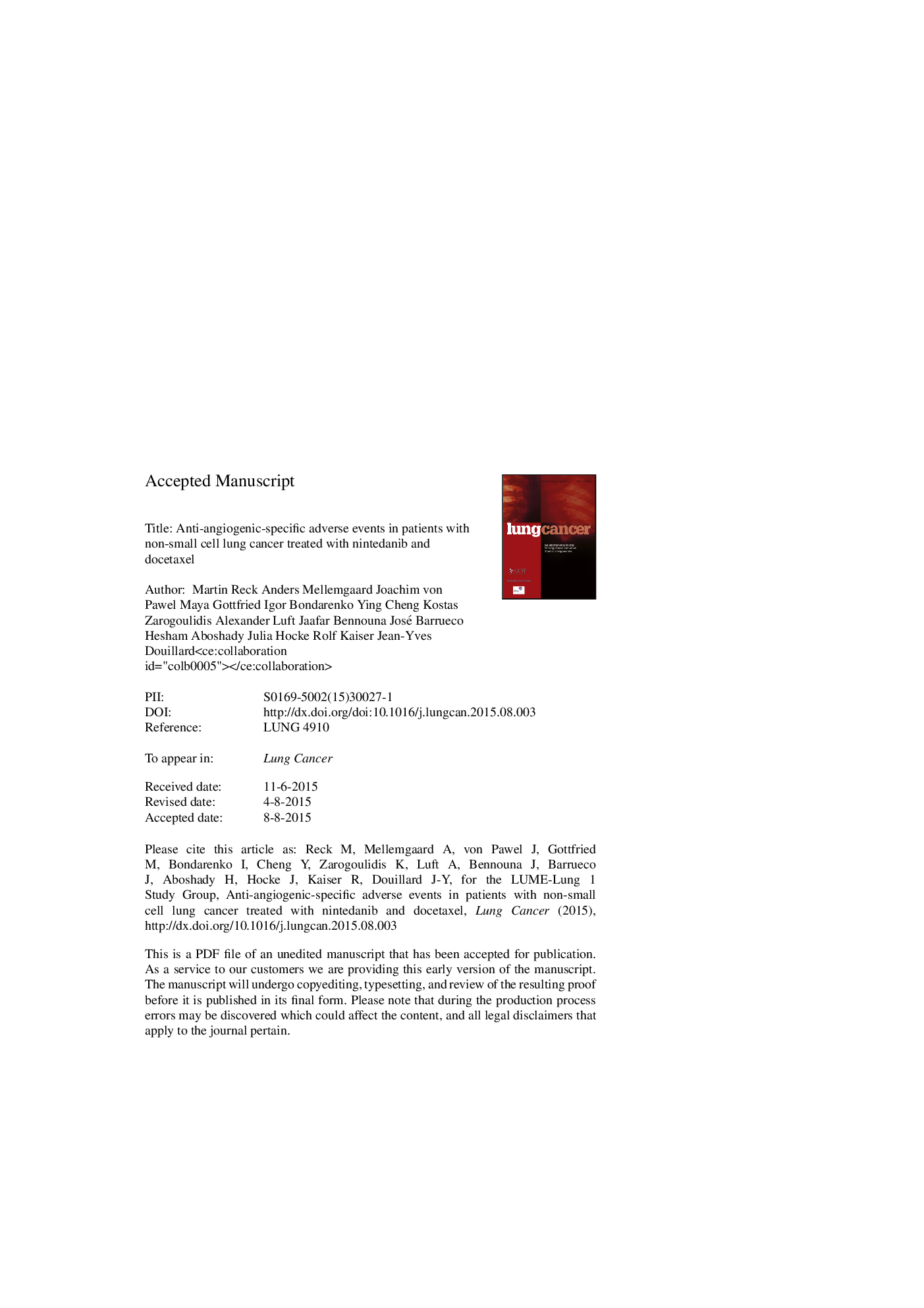| Article ID | Journal | Published Year | Pages | File Type |
|---|---|---|---|---|
| 10910819 | Lung Cancer | 2015 | 69 Pages |
Abstract
The incidence of patients with all-grade gastrointestinal (GI) perforations was low and balanced between arms (0.5% in both) and across histologies; the incidence of non-GI perforations was 1.2% with nintedanib + docetaxel versus 0.2% with placebo + docetaxel. The incidence of some events was higher with nintedanib + docetaxel versus placebo + docetaxel; hypertension (3.5% vs 0.9%), rash (11.0% vs 8.1%), and cutaneous adverse reactions (13.0% vs 10.7%). Rash and cutaneous adverse reactions were predominantly Grade 1-2 with both treatments. The incidence of all-grade bleeding was also slightly higher in nintedanib + docetaxel-treated patients (14.1% vs 11.6%) driven by between-treatment differences in the SCC subpopulation; most events were Grade 1-2. The proportion of patients with a thromboembolic event was low and comparable between arms for all grades (5.1% vs 4.6%) and Grade â¥3 (2.1% vs 3.1%). Safety evaluation of the LUME-Lung 1 study showed that the frequency of AEs commonly associated with other anti-angiogenic agents was lower with nintedanib + docetaxel. Survival benefits from addition of nintedanib to docetaxel in patients with adenocarcinoma after first-line therapy can be achieved alongside a manageable safety profile.
Keywords
Related Topics
Life Sciences
Biochemistry, Genetics and Molecular Biology
Cancer Research
Authors
Martin Reck, Anders Mellemgaard, Joachim von Pawel, Maya Gottfried, Igor Bondarenko, Ying Cheng, Kostas Zarogoulidis, Alexander Luft, Jaafar Bennouna, José Barrueco, Hesham Aboshady, Julia Hocke, Rolf Kaiser, Jean-Yves Douillard,
